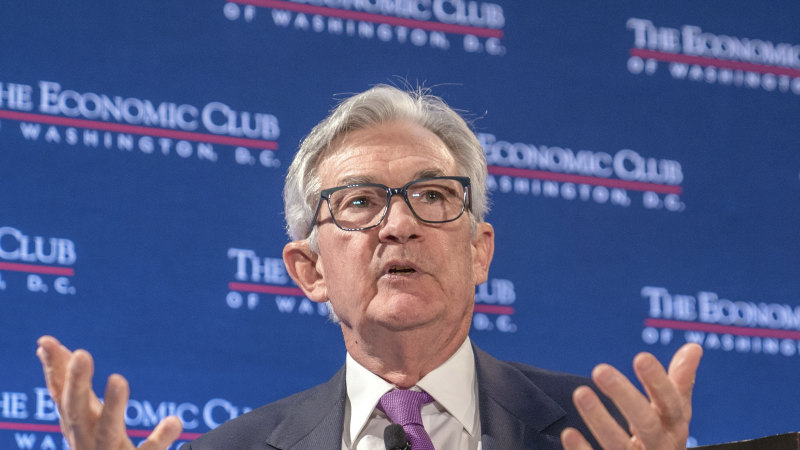Powell explained it was good that the disinflation seen so far hadn’t come at the expense of the labour market, but further rate rises would be appropriate, borrowing costs would need to remain high for some time, and he couldn’t rule out raising rates than more than markets currently expect.
Nothing that he said was out of kilter with his and the Fed’s commentary when the US central bank raised its federal funds rate by 25 basis points last week, its eighth rate rise in 11 months.
Loading
Pleasant surprise
By not seizing on the jobs data to talk more aggressively about the prospect of “even higher for even longer” rates, he provided a pleasant surprise for financial markets. Investors had been positioned for a signal from Powell that the jobs data would force the Fed to adopt a tougher-than-it had-expected approach to driving down the inflation rate.
After initially sliding, the sharemarket resumed the bullish run it’s been on this year, rising 1.3 per cent on Tuesday. The Nasdaq index, with its bias to technology stocks, rose 1.9 per cent and the index of the biggest tech companies added 2.5 per cent.
The view that the end of this rate cycle is in sight, perhaps only 50 basis points away, has powered the US equity market this year. The S&P 500 index has risen 8.5 per cent, while the more risk-sensitive Nasdaq is up about 16 per cent and the mega-tech stocks rallied 30 per cent.
Like Powell, RBA governor Philip Lowe will be hoping that the ‘lag’ effects of the recent rate rises are going to emerge soon.
Despite Powell’s references to “ongoing” rate rises, this is very much a “risk on” environment, with the market pricing in peak rates mid-year and a soft landing for the US economy.
In the US and elsewhere, it is the tightness of labour markets, particularly in service sectors, that has been a feature of post-pandemic economies that is being monitored most closely. Generally, wage pressures in the US appear to be moderating, but shortages of workers in the service industries means the threat of a wage-price spiral remains.
Lag effects
Similar circumstances apply within the Australian economy, where the unemployment rate of 3.5 per cent is the lowest in almost half a century, the inflation rate of 7.8 per cent is the highest for more than 30 years and the Reserve Bank, having already lifted the cash rate nine times in this cycle, is foreshadowing further rate rises in the months ahead.
Like Powell, RBA governor Philip Lowe will be hoping that the “lag” effects of the recent rate rises, which take time to show up in slowing economic activity, are going to emerge soon. And, like Powell, he will also be hoping that the tightness of the Australian labour market doesn’t lead to a widespread wages breakout, and that the global factors that helped ignite global inflation rates wane.
Supply chains, while reshaped by the pandemic and the war in Ukraine, have been steadily functioning better. China’s reopening of its economy should also help on that front, as well as boosting the global supply of relatively cheap manufactured goods.
Loading
Oil prices have subsided and, with the major central banks all tightening their monetary policies and the big surge in governments’ pandemic-related spending essentially behind them, economic and financial conditions have tightened (though the financial markets are doing their best to counter that by lowering the cost of capital – debt as well as equity – for businesses and recreating wealth for households).
The war in Ukraine and the geopolitical tensions between the US and its allies and China are wild cards but, absent the unexpected, there is an expectation that this year central bank interest rates will peak and that they, along with inflation, will be trending down, if not this year, then next.
When and where that peak is reached, and how long it takes to get inflation rates back to the 2 to 3 per cent range the central banks are targeting is, obviously, the critical question for financial markets, businesses and households, but one with a lot of uncertainties.
Ar this point, it would appear the markets have a greater conviction about the trajectory of rates and their turning points than the central bankers who decide them. Everyone, including the central bankers, will be hoping the markets have it right.
The Business Briefing newsletter delivers major stories, exclusive coverage and expert opinion. Sign up to get it every weekday morning.
Stay connected with us on social media platform for instant update click here to join our Twitter, & Facebook
We are now on Telegram. Click here to join our channel (@TechiUpdate) and stay updated with the latest Technology headlines.
For all the latest Business News Click Here
For the latest news and updates, follow us on Google News.

